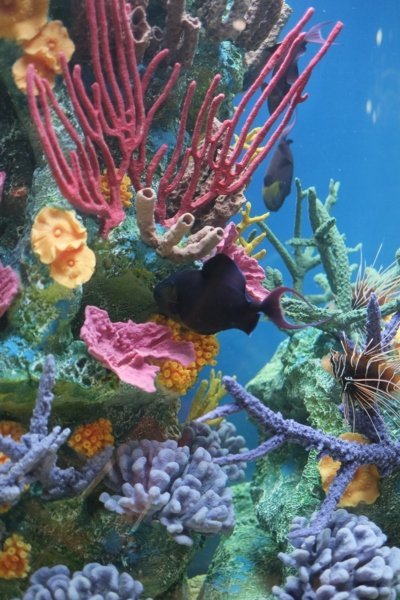 Mirrorless Camera Buying Guide 2024
Mirrorless Camera Buying Guide 2024
Overview
This is Step 4 of the Mirrorless Digital Camera Buying Guide. This page teaches how to choose a mirrorless system and decide on a digital camera to start with for various types of photography. Start at Step 1 for general information about mirrorless cameras or head to Step 3 for a description of each mirrorless platform.
Selecting a Mirrorless System
Every mirrorless camera is part of a system built around a lens-mount which determines its native lenses. These lenses are designed to cover an imaging-circle that supports sensor-sizes defined by the platform. The most significant difference between mirrorless systems is their lineup of lenses since they limit photographic potential. When comparing lineups though, it is important to include the focal-length multiplier which is determined by sensor-size.
All these considerations join into three main aspect when choosing a mirrorless system:
- Photographic Subjects: Most types of photography are better served by certain lenses.
- Bulk: The imaging circle implied by sensor-size constrain the size of optics needed by a camera.
- Image quality: The prime contributor of image quality is sensor-size which is determined by a system.
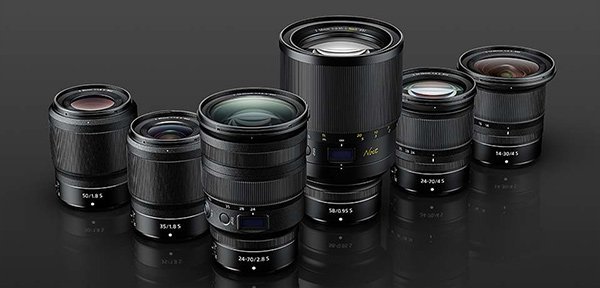
Photography & Lenses
The following table shows focal-range coverage for each system at all supported sensor-sizes. The right most pair of columns show 35mm-equivalent values which can be compared. Keep in mind that First-Party lenses are produced directly by makers of the system which makes them fully functional. Third-Party lenses expand coverage but most such lenses are restricted in some way and frequently completely manual.
| Mirrorless System | Sensor-Size | Native Focal-Range | 35mm Equivalent | ||
|---|---|---|---|---|---|
| First-Party | Third-Party | First-Party | Third-Party | ||
| Micro Four-Thirds | Four-Thirds (2X) | 7-400mm | 4-400mm | 14-800mm | 8-800mm |
| Fujifilm X | APS-C (1.5X) | 8-400mm | 4-400mm | 12-600mm | 6-600mm |
| Sony E | APS-C (1.5X) | 10-350mm | 4-350mm | 15-525mm | 6-525mm |
| Full-Frame (1X) | 12-600mm | 9-600mm | |||
| Sony A | APS-C (1.5X) | 11-300mm | 8-300mm | 17-450mm | 12-450mm |
| Full-Frame (1X) | 16-500mm | 12-500mm | |||
| Leica L | APS-C (1.5X) | 11-280mm | 9-400mm | 17-420mm | 14-600mm |
| Full-Frame (1X) | 14-280mm | 9-400mm | |||
| Nikon Z | APS-C (1.5X) | 16-250mm | 24-375mm | 14-375mm | |
| Full-Frame (1X) | 14-200mm | 9-200mm | |||
| Canon RF | Full-Frame (1X) | 15-800mm | 9-800mm | ||
| Fujifilm GFX | 645D (0.8X) | 23-250mm | 17-250mm | 18-200mm | 14-200mm |
| XCD | 645D (0.8X) | 21-135mm | 17-108mm | ||
| Canon M | APS-C (1.6X) | 11-200mm | 4-300mm | 17-320mm | 7-480mm |
The column highlighted in yellow represents the focal-range covered by native lenses in equivalent Full-Frame terms. This confirms that Micro Four-Thirds is the most versatile platform, followed by Fujifilm X and Full-Frame Sony E. Regardless of sensor-size, Sony A also has fantastic coverage from ultra-wide to super-telephoto. These systems all have native lenses suitable for any type of photography.
Wide-angle coverage is fantastic except for APS-C Nikon Z which is limited to 24mm-equivalent at the widest. Sony A, APS-C Leica L, Fujifilm GFX and XCD offer good ultra-wide angle coverage yet falls short compared to the widest: Fujifilm X, Full-Frame Sony E, Nikon Z and Micro Four-Thirds. Those 5 are ideal for landscape and architecture photography, particularly interiors and monuments. Using third-party lenses though, the gap closes for Sony A and Fujifilm GFX.
Architectural and landscape photography are best achieved with Fujifilm X, Sony E Full-Frame, Nikon Z Full-Frame and Micro Four-Thirds systems.

Older systems clearly show an advantage for telephoto lenses. Micro Four-Thirds is significantly ahead here. Both Fujifilm X and all Sony systems have really superb reach. All these platforms are capable of wildlife photography which demands the longest lenses. While Leica L, Nikon Z with an APS-C sensor and Canon M technically have enough reach for most sport photography, their telephoto lenses are rather dim. Nearly all other systems have lenses suitable for street photography and close-quarter sports. The Hasselblad XCD system though does not reach long enough for any of these types of photography.
Micro Four-Thirds is the most capable for wildlife photography, followed by Fujifilm X and all Sony mounts and sensor-size combinations. These same systems offer good lenses for sport photography.
Macro photography is possible on system with a full-frame or smaller sensor. There are no macro lenses for Medium-Format mirrorless systems. Third-party manufacturers offer ultra-macro lenses for systems other than Leica L, Fujifilm GFX and Hasselblad XCD. Ultra-bright lenses exist for mirrorless platforms that also have compatible ultra-macro lenses. Such optics are favored for portraiture.
Non Medium-Format systems are better-equipped for portrait and macro photography. Micro Four-Thirds is even more advantageous for product photography due its deeper depth-of-field.
Travel photography generally includes most photographic subjects using general-purpose lenses rather than specialized ones, given that travelling with all the gear is implied in the art! For this reason, particularly long or ultra-bright lenses are rarely used by travel photographers.
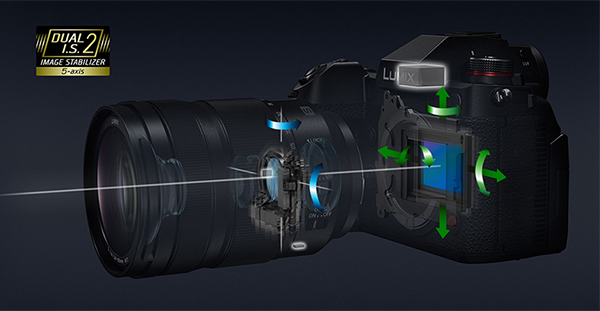
Night photography is often bundled with low-light photography but they are actually different. For Night Photography and Astrophotography, time is used to gather more light. These long exposures diminish the impact of sensor-size, although a smaller sensor necessarily requires more time to capture the same amount of light as a larger one.
While light is low during Night Photography, there are other types of Low-Light Photography. Taking photos in low-light without long exposures afforded by a tripod requires optimizing a number of factors. Regardless of the camera and lens, the lack of light is problematic, the difference is how problematic. Larger sensors have a pure advantage that is always beneficial in low-light. Image-stabilization though is even more effective when subject motion is slow. Systems with Dual IS are capable of up to 7-stops of stabilization under ideal circumstances. No sufficiently large sensor exists to compete with modern built-in image-stabilization.
The classic way to improve low-light photography with a large aperture. That is why lenses capable of wide apertures are called bright lenses. Anything wider than F/2.8 is considered bright and F/1.4 or bigger is ultra-bright. There are bright lenses for all mirrorless mounts, although just one for XCD and 3 for GFX.
Full-Frame E-mount, followed by Leica L, are currently the best choices for low-light photography due to their state-of-the-art built-in 5-axis image-stabilization mechanisms and extensive selection of ultra-bright lenses.
Newer Full-Frame systems are designed for very bright optics yet Nikon Z and Canon RF currently offer a limited selection. Leica L already has a good number of ultra-bright lenses due to Sigma expanding the L-mount lineup started by Leica. There are an outstanding number of bright lenses for Sony E, the most of any system.
Micro Four-Thirds follow with a high number of ultra-bright lenses that span a larger focal-range that Sony E even. Fujifilm X is the only APS-C system with a significant number of bright and ultra-bright lenses. Cropped-sensors can capture plenty of light but the same brightest F/0.95 aperture is available for several full-frame mirrorless platforms. The important difference is that the weight of an F/.0.95 lens is 230g on Micro Four-Thirds, twice that for APS-C and more than 3X for Full-Frame, which is a great reminder to move on to the next topic!
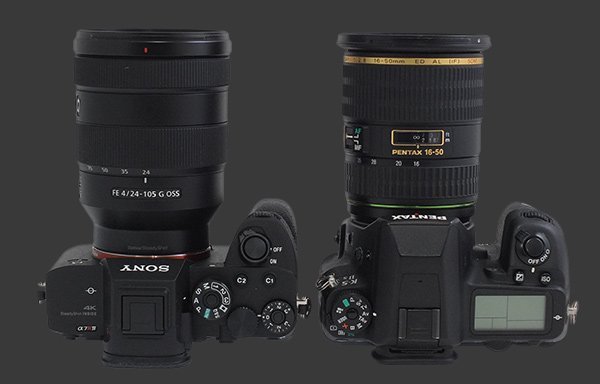
Mirrorless System Size
The reason so much innovation is focused on mirrorless cameras is to maximize the balance between image-quality and bulk. Immediately taking away the space required for a reflex mirror to swing makes it possible to build smaller cameras. Removing a pentaprism reduces size further by eliminating a fairly heavy component. This provides additional freedom when designing optics to make certain types of lenses to be more compact.
Mirrorless cameras come in a range of form-factors. While most manufacturers offer very compact models, several chose to offer large ones to capture different markets. For the most buyers, size is a major concern and very often the reason for not using a DSLR frequently. Many cameras themselves are sufficiently smaller than an equivalent DSLR. Lenses are not that different in size, so what may be a substantial reduction in camera-size often becomes a less impressive saving in total bulk.
Building a camera with a smaller sensor allows a proportional reduction in size and weight of lenses. There is a limit beyond which cameras cannot shrink without becoming less usable. This is what happened to the Nikon 1 and Pentax Q systems that failed to deliver image-quality and size that competes with Micro Four-Thirds.
Micro Four-Thirds maximizes the ratio of image-quality to size better than any mirrorless platform with a substantial saving in total bulk.
Among mirrorless digital cameras with larger APS-C sensors, Sony E cameras are the most compact and comparable in size to the average Micro Four-Thirds model. While their lenses are relatively light, they remain notably heavier. Both Canon M and Nikon Z systems with APS-C sensors are highly competitive in this area yet are truly limited by their current lens lineups. While bridging the gap using lens adapters is possible, that cancels the size advantage.
Fujifilm makes a few highly compact X-mount cameras and produces some very light lenses. Most of their lenses are heavier though since the X-mount system is tuned towards a higher-end market which is better served by larger optics for more demanding image-quality. This different philosophy also shows up within the lineup: Fujifilm produces many more weatherproof lenses than Sony does for their APS-C mirrorless.
Travel photography requires versatility in the most compact form. Micro Four-Thirds truly excels at this. Sony E and Fujifilm X follow with E-mount edging on compactness and X-mount leading on versatility.
Full-frame diminishes the size-advantage that mirrorless cameras have over DSLRs. There is still a noticeable difference when comparing cameras yet lenses are very similar in size. When taken together, the bulk saved is not that much. Full-Frame Sony E cameras and FE lenses show the most significant lead here. The Nikon Z system is starting with a similar size and is heading in a really good direction by favoring lenses that deliver high image-quality in compact size.
Image Quality & Speed
This is the point of compromise. While smaller sensors grab system size and weight as advantages, those built around larger sensors automatically lead on image quality when comparing the best technology available. It all comes down to Signal-to-Noise ratio. The more light is gathered, the more it drowns-out noise, resulting in smoother images and wider dynamic-range. A larger sensor can be divided into more pixels while maintaining low-image noise because each pixel is bigger. That is why larger sensors can offer higher resolution while maintaining image-quality.
The largest sensors available on mirrorless cameras are 44x33mm Medium-Format sensors featured in the GFX and XCD platforms. These sensors have 68% more surface area than full-frame sensors which gives them a huge dynamic-range advantage. They are the only sensors to record 16-bits per photosite, while others output either 14-bits or 12-bits. In the Fujifilm GFX 50R review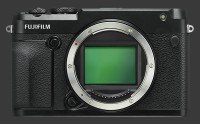
Fujifilm GFX 50R, it was noticeable that images from this camera have the look of HDR even when captured in a single exposure.
Medium-Format cameras produce best-in-class image-quality with ultra-high resolution and unparalleled dynamic-range but slower speed.
Medium Format cameras offer very high resolutions with 50 to 100 MP. This makes it possible to make enormous detailed prints yet comes with one disadvantage: The large amount of data from such high resolution at 16-bits requires a lot of throughput which makes these cameras the slowest. In continuous drive mode, 3 FPS is typical and 5 FPS is the current upper-limit.
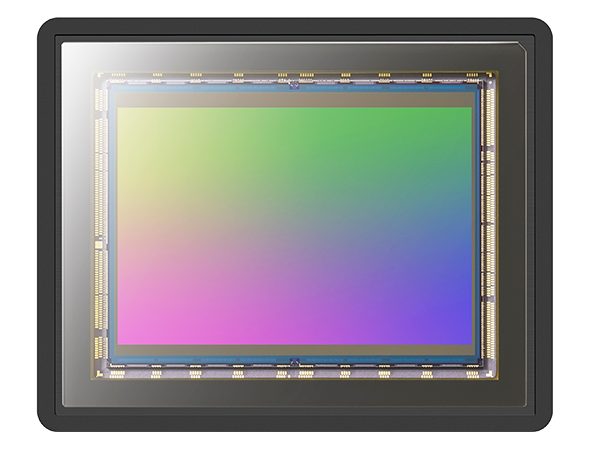
Full-Frame sensors are the gold-standard of performance with their superb image-quality and high speed.
One step below are Full-Frame sensors with the same sizes as a 35mm-film frame or 36x24mm. The image quality from such modern full-frame sensors is truly excellent. With their 14-bit output, they can capture over 14 EV of dynamic-range. With resolution starting at 24 MP and exceeding 60 MP, these cameras can produce large to poster-sized prints. Having fewer megapixels than Medium-Format, mirrorless cameras with Full-Frame sensors have continuous drives of 8 to 20 FPS, making them ideal for fast action photography.
Camera sensors are silicon chips that are expensive to manufacture at large sizes. APS-C sensors were initially introduced to lower costs rather than reducing camera size. This resulted in the inconvenience of a crop-factor that made it necessary to design new wide-angle lenses. It took many years for full-frame DSLRs to become mainstream afterwards. Pentax was the first to produce highly optimized lenses for APS-C sensors which incidentally made it more difficult for them to enter the full-frame market.
Mirrorless cameras with APS-C sensors deliver competitive image-quality from bright to moderate light levels while saving substantial bulk.
Nowadays, state-of-the-art APS-C sensors are capable of excellent image-quality with dynamic-range that rivals full-frame. Even image-noise is comparable at low ISO sensitivities. As ISO increases though, image-noise from APS-C sensors rises faster than on full-frame ones. The technical reason can be summarized as sensor-noise dominating at low ISO and light-noise at high ISO. The result is that full-frame sensor maintain a image-quality lead at high sensitivities.
The majority of current APS-C mirrorless cameras are built around the same 24 MP 1.5X-Crop BSI-CMOS with a few more or fewer megapixels. These sensors output 14-bits per photosite like full-frame models and therefore offer similar frame-rates. More than half capture over 10 FPS while some reach 20 FPS at full-resolution or 30 FPS with an additional crop.
Four-Thirds was launched specifically to undercut the size of APS-C, initially with DSLRs. Micro Four-Thirds sought to take this advantage further by reducing the flange-distance while keeping virtually the same sensor and mount specifications, inheriting a 2X crop-factor and 4:3 aspect-ratio that gives these systems their names.
With Micro Four-Thirds realizing its size-advantage, it necessarily concedes image-quality to larger sensors. When Olympus and later Panasonic moved to using Sony sensors, their Micro Four-Thirds narrowed the gap to a reasonable level behind APS-C. Modern Micro Four-Thirds mirrorless produce images with very little image-noise at low ISO. This increasing slowly, giving a usable range until mid-level sensitivities. Dynamic-range remains roughly two-stops behind which corresponds to APS-C having 2¼X the surface of Micro Four-Thirds.
An ideal system does not need to deliver the ultimate image-quality but the desired level and versatility without being cumbersome.
Superior image-quality absolutely requires a larger sensor. The key is deciding when image-quality is sufficient for its intended usage. For photography in good light or displaying at small to medium sizes, good and great image-quality do not look very different.
Choosing a Mirrorless Camera
Knowing which mirrorless systems are most suitable for your photography, the time comes to choose a mirrorless digital camera. Cameras are changed and evolve faster than lenses, so the first camera should be a good introduction to mirrorless yet does not have to be excessively expensive. Lenses tend to accumulate but once part of a system, they follow along new cameras.
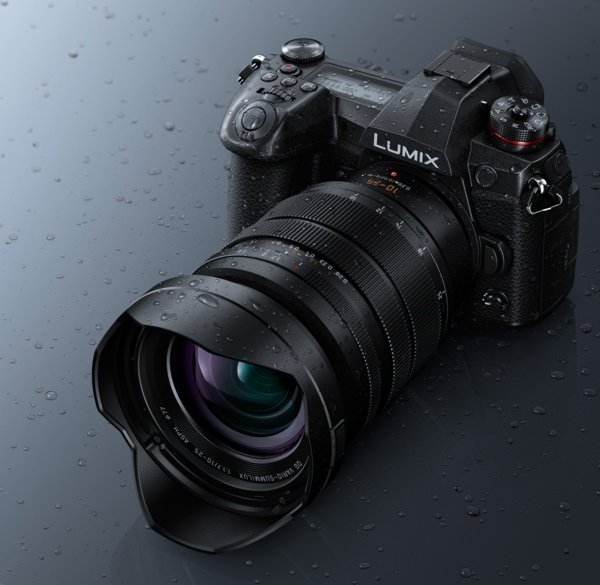
Resolution used to be the most desirable specification but modern systems have converged to similar resolutions throughout the lineup, with the exception of Sony that offers highly specialized low-light cameras and ones that maximize resolution. All cameras nowadays have excessive resolution for showing images online and for prints up to letter-size and even a little larger. One should give importance to resolution only for large artwork and poster-size prints.
Speed varies much more than resolution and is more important with moving subjects. Obviously, architecture, landscape, urban and night photography are not concerned with speed. Moderately fast frame-rates are very helpful for street and people photography, while truly fast cameras greatly improves changes of capturing peak action and sports. Operational speed is another key element to consider so that a photographer can keep up with his subjects.
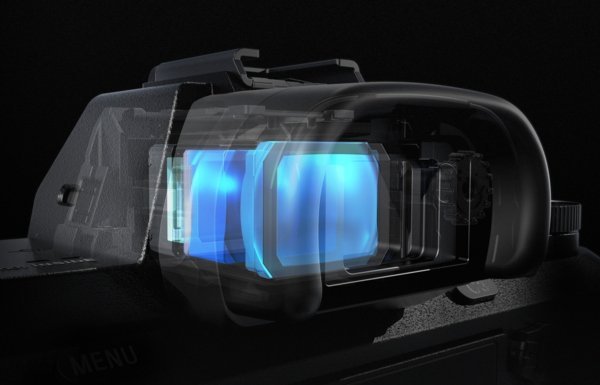
Ergonomics influence how fast and efficient a camera can be operated. For a professional photographer, good ergonomics means getting the shot and for amateurs it gives a better experience that invites creativity. There is no metric for ergonomics but all Neocamera digital camera reviews examine ergonomics and usability closely. The most important specifications related to ergonomics are the viewfinder and number of control-dials. Viewfinder magnification is so important that the Mirrorless EVF Size article is among our most popular.
Next step in this Mirrorless Digital Camera Buying Guide allows to explore and compare any mirrorless camera. Once a system is selected, a list of all its current cameras will appear with an at-a-glance view of its main specifications. Icons show what characteristics are attributed to each camera, which shows if a camera is weatherproof for example. Click on a camera model name to see its full specifications are star any number of them to compare them and automatically have differences between them highlighted and ranked.
Next
Advance to Step 5 - Mirrorless Cameras to browse digital cameras by mirrorless system. The detailed information about each mirrorless platform, return to Step 3.
Please Support Neocamera
All information on Neocamera is provided free of charge yet running this website is a huge endeavor. Purchases made via affiliate links found throughout the site help keep it running and up-to-date. There is no additional cost to you, so please consider buying via these links to our affilates:
If you found any information on this site valuable and did not purchase via our affiliate links, please considering donating via PayPal:
Any amount will be greatly appreaciated. Thank you for your support!
New Cameras & Lenses

Sony FE 50-150mm F/2 GM
Weatherproof
Sony E Mount Zoom
2025-04-22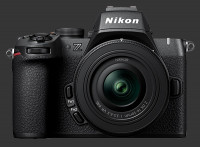
Nikon Z5 II
24 Megapixels Mirrorless
Nikon Z Lens Mount
Built-in Stabilization
Weatherproof
2025-04-03
Canon RF-S 14-30mm F/4-6.3 IS STM PZ
Stabilization
Canon RF Mount Zoom
2025-03-26
Canon RF 20mm F/1.4L VCM
Weatherproof
Canon RF Mount Prime Lens
2025-03-26
Canon EOS R50 V
24 Megapixels Mirrorless
Canon RF Lens Mount
2025-03-26
Venus Optics Laowa 14mm T/2.6 Zero-D VV Cine
Sony E Mount Prime Lens
2025-03-25
Updates
2025.01.18

Fujifilm GFX 2025 Lens Roundup
Lens Review roundup of Fujifilm GFX Medium-Format lenses. Quality, performance and handling of the GF20-35mm F/4R WR, GF30mm F/3.5 Tilt-Shift and the GF55mm F/1.7.
2024.11.18

Best 2024 Photography Gifts for Every Budget
Great gifts for photographers and photo enthusiasts selected for every budget among the best products of 2024.
2024.08.07

Eye Protection Tips for Professional Photographers
The four main considerations for professional photographers regarding eyewear.
2024.07.14

Fujifilm X100VI Review
Flagship fixed-lens compact digital camera with a 40 MP sensor and Image-Stabilization, a first for the series. Retro design featuring dual control-dials, plus direct ISO, Shutter-Speed and EC dials. Its hybrid viewfinder can switch between EVF and OVF mode.
2024.05.09

Fujifilm GFX100 II Review
Flagship 102 Megapixels Medium-Format Mirrorless Digital Camera with 8-Stop 5-Axis IBIS, 8 FPS Drive, 8K Video and 400 MP Super-Resolution capture in a weatherproof and freezeproof body with dual control-dials and dual memory-card slots.
2024.04.03

Fujifilm X-T5 Review
Newest Fujifilm flagship boasting a 40 MP APS-C sensor, 5-axis IBIS with 7-stop efficiency, 15 FPS continuous drive, 6.2K Video capture, dual control-dials and dual SDXC UHS-II slots in a sturdy weatherproof and freezeproof body.
2023.11.20

Best Digital Cameras of 2023
Find out which are the Best Digital Cameras of 2023. All the new Mirrorless Digital Cameras from entry-level to high-end professional.
2023.07.10

Fujifilm X-H2 Review
40 Megapixels APS-C Hybrid Mirrorless Digital Camera with 7-stop IBIS. Fastest shutter ever and 8K video capture. Large builtin EVF with 0.8X magnification and 5.8 MP, plus an Eye-Start Sensor. Packed with features and large number of controls in a weatherproof and freezeproof body.
2023.05.07

Sony FE 20-70mm F/4G Review
Review of the unique Sony FE 20-70mm F/4G lens. The optical zoom of this lens spans ultra-wide-angle and medium focal-length coverage, making it one of the most versatile Full-Frame lenses on the market.
2023.01.15

Huion Inspiroy Dial 2 Review
Review of the Huion Inspiroy Dial 2 tablet, a medium sized drawing surface with dual dials and customizable buttons. Connects via USB-C or Bluetooth 5.0 with Windows, Linux and Android support.
2022.12.08

How to Pack for a Photo Trip
Find out how to pack for a travel photography trip, carry your gear safely while meeting airline regulations.
2022.11.13

Best Digital Cameras of 2022
The best digital cameras of 2022. A short list of the most outstanding models in their respective categories. Choose one for yourself or as a gift.
2025.01.18
2024.11.18
2024.08.07
2024.07.14
2024.05.09
2024.04.03
2023.11.20
2023.07.10
2023.05.07
2023.01.15
2022.12.08
2022.11.13
NEWS
2025.04.22

Sony Unveils Brightest Full-Frame Telephoto Zoom Lens
Lens
2025.04.03

Nikon Released Second Generation Z5 Full-Frame Mirrorless
Digital Camera
2025.03.26

Canon Launches Pair of Cameras and Lenses
Digital Camera ○ Lens
2025.03.25

Venus Optics Launches Vista Vision Cine Lenses
Lens
2025.03.24

Think Tank Photo Walker Pro
Bag
2025.03.20

Fujifilm First Fixed Lens Medium-Format Camera
Digital Camera
2025.02.26

Sony Launches Two New Lenses at CP+2025
Lens
2025.02.25

CP+2025 Showcases Numerous Launches
Digital Camera ○ Lens
2025.02.13

Nikon Launches 5X Full-Frame Power-Zoom Lens
Lens
2025.02.05

Nikon Refreshes Flagship Ultra-Zoom
Digital Camera
2025.02.05

Nikon Launches Ultra-Bright 35mm F/1.2 Prime Lens
Lens
2025.01.21

Fujifilm Evolves INSTAX Wide
Digital Camera



